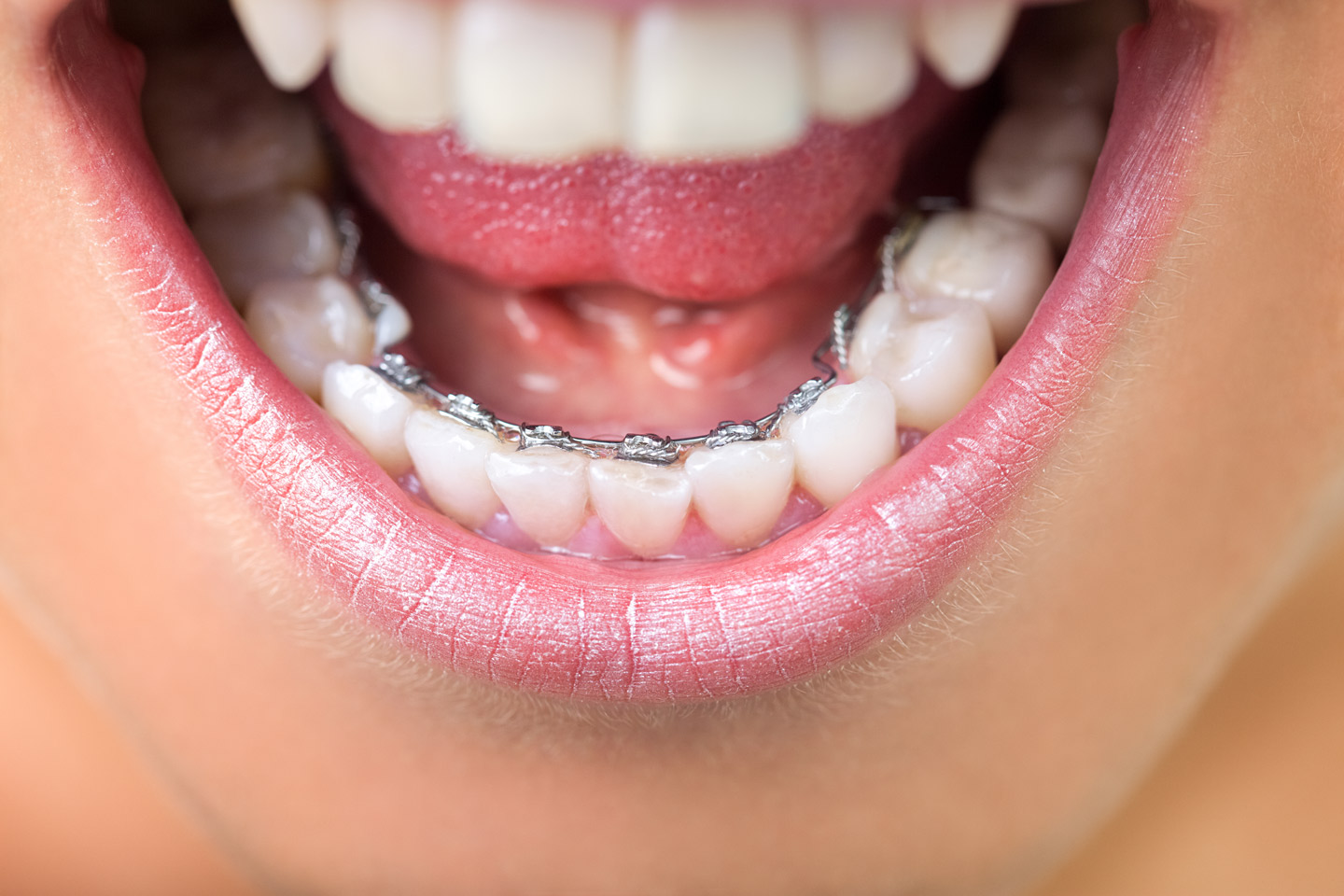Lingual Braces: A Comprehensive Guide

What Are Lingual Braces?
Lingual braces are designed to correct dental misalignments using a system of brackets and wires, much like traditional braces. The key distinction is their placement: lingual braces are affixed to the back of the teeth, facing the tongue, rather than the front. This positioning makes them virtually invisible to others, providing a discreet orthodontic solution for individuals who may be self-conscious about the appearance of traditional metal braces. Lingual braces are gaining popularity among both adults and teenagers who seek an effective but less visible option for improving their dental alignment.
How Lingual Braces Are Placed
The process of fitting lingual braces involves several steps and requires a high degree of precision. Initially, custom brackets are created based on detailed impressions of the patient’s teeth. These brackets must be precisely placed on the backs of each tooth. Unlike traditional braces, which use standardized brackets applied individually, lingual braces involve a more intricate process. The orthodontist uses a customized tray to position all the brackets and wires simultaneously. This method is necessary due to the limited access and space at the back of the teeth, which makes the installation more complex compared to standard braces.
Benefits of Lingual Braces
One of the primary advantages of lingual braces is their inconspicuous nature. They are an excellent option for adults and teenagers who prefer not to display metal braces. Lingual braces are positioned behind the teeth, making them less noticeable and a popular choice for those who want to maintain a professional or aesthetic appearance during their treatment. Despite their discreet placement, lingual braces are highly effective in addressing various orthodontic issues, including complex misalignments, rotations, gaps from extractions, and uneven tooth heights. Additionally, any potential discoloration or white spots from the braces will occur on the inside of the teeth, which is less visible. The custom fit of lingual braces also enhances comfort compared to other braces types, as they are tailored to each patient’s specific dental structure.
Disadvantages of Lingual Braces
While lingual braces offer many benefits, they also come with certain drawbacks. They may not be suitable for individuals with extreme or deep overbites, as the additional pressure can cause the brackets to detach. Adjusting to lingual braces can also affect speech temporarily, causing a lisp as the tongue interacts with the back of the teeth. This issue usually resolves as the patient gets used to the braces. Furthermore, lingual braces can cause some discomfort or irritation on the tongue, especially during the initial adjustment period. Although these symptoms typically lessen over time, they can be bothersome for new users.
Other Factors to Consider
When considering lingual braces, it’s essential to evaluate your personal preferences and lifestyle. Certain foods, particularly those that are hard, crunchy, or sticky, can be challenging to manage with lingual braces. Food particles can become trapped behind the teeth, making oral hygiene more demanding. If this is a concern, alternatives such as Invisalign might be more suitable. Additionally, lingual braces tend to be more expensive than traditional braces due to the customization required for each patient. The cost reflects the precise fitting and advanced technology involved.
The duration of treatment with lingual braces typically ranges from one to two years, depending on the severity of the misalignment and individual treatment goals. Regular visits to the orthodontist for adjustments are necessary throughout this period. The treatment time is generally comparable to that of traditional braces, though it can vary based on the complexity of the case.
Growing Interest in Lingual Braces
As more patients seek discreet orthodontic options, the interest in lingual braces continues to grow. However, not all orthodontists are equally experienced in installing and treating with lingual braces. It is important to consult with your dentist or orthodontist about whether lingual braces are a viable option for your specific needs. In some cases, traditional braces or Invisalign may offer a better fit for your orthodontic goals.
By understanding the unique features and considerations associated with lingual braces, you can make an informed decision about the best orthodontic treatment for you. Whether you value discretion, comfort, or effectiveness, evaluating all options will help ensure a successful journey toward achieving a healthier, more aligned smile.



